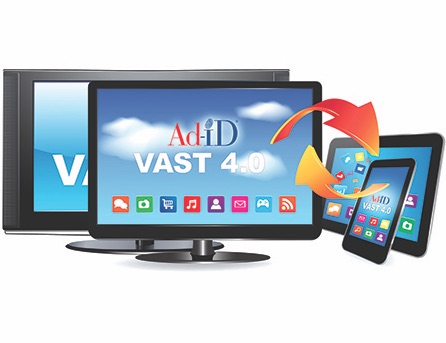The All-Too-Slow Move to Adopt Ad Identifiers

Related: Ad-ID’s Geller: Tagging Ads Is No Longer a Luxury
Julian Zilberbrand, executive VP of audience science for Viacom, can only shake his head when he hears that some content companies still aren’t using ad identifier standards.
Those companies aren’t taking advantage of developments such as Ad-ID, the standard for identifying ad assets across every media platform; and the Interactive Advertising Bureau’s (IAB) Digital Video Ad Serving Template (VAST) 4.0, which describes the video ad, covering the location and details of the media file, and includes tracking and verification information, and other metadata. They aren’t just doing themselves a disservice, Zilberbrand said. They’re being “negligent.”
“If you’re putting dollars in the market in the video space, and you’re not leveraging the measurements and functions within VAST, you’re… missing out, and to some degree, there’s negligence involved,” he said, speaking during a recent online presentation about the state of ad identifying standards. “The reality is that measurement is involved with everything we do from an investment standpoint, [and] VAST has allowed us a deeper ability to measure…to qualify and quantify your investment.”
Ad-ID registration and VAST 4.0 are no longer options; they’re necessities to not only measure but monetize content across platforms, Zilberbrand and other experts agree. As of Aug. 1, 3,375 advertisers have taken advantage of Ad-ID, with nearly 2.2 million Ad-ID codes divvied out to media assets. And VAST 4.0 allows both vendors and publishers to break up video files from any interactive component, making sure ads will play on devices and platforms that won’t handle the interactive elements of an ad.
VAST 4.0 is a significant upgrade over previous versions, Zilberbrand said, because it eliminates the need to wrap additional code or tags around ad content to help measure things such as clicks and viewability. “Now you’re in a position to ultimately track from end to end, and understand where your dollars are working, and ultimately determine where your investments should go,” he said. “This ability to capture all this information makes you better as an investor.”
UPDATES FOR GOOD MEASURE
Broadcasting & Cable Newsletter
The smarter way to stay on top of broadcasting and cable industry. Sign up below
Alanna Gombert, GM of IAB’s Tech Lab, said VAST 4.0 was released “in response to the ever-changing and ever-forward-moving migration of television advertising and television dollars into the digital ecosystem” and noted that, “The updates in VAST 4.0 are pretty substantial and important.”
“As we look at the convergence of cable TV and digital into one…we really focused on the mezzanine, files, the universal Ad-ID, server-side ad insertion and interactive call separation,” Gombert said. “Ad-stitching services are quite prevalent in our space now, and server-side ad insertion has been a very large priority on the digital side, and going into the television side.”
Gombert said IAB’s updates to VAST have kept in mind that the needs of advertising on over-the-top and other digital platforms is vastly different than what a broadcaster needs. And IAB’s efforts haven’t gone unnoticed among media and entertainment execs.
“One of the most important things [to] a publisher is the quality of your user experience,” said Jarred Wilichinsky, VP of video monetization and operations for CBS Interactive. “At CBS, as a broadcaster, maintaining the TV experience online is expected. VAST 4.0 really opens the door, officially, into server-side ad-insertion, which, if you’re not on desktop, is probably one of the main preferred paths of execution, when you’re talking about any device.”
Wilichinsky added that VAST 4.0 allows for quick turnaround of ads to new devices, phones and connected TVs. And he had just as much praise for Ad-ID.
“Adoption of universal Ad-ID is going to be key to scale these things,” he said. “The way data goes into systems is going to start affecting [measurement] from point A to point Z, and everyone needs to be on the same page. We need to standardize, and standardization of that metadata is extremely important.”
Lindsay Smith, director of product management and operations for Ad-ID, is on the same page as the companies that use Ad-ID’s services: She doesn’t understand why everyone isn’t using it and tools such as VAST 4.0.
“Oftentimes an advertisement will run on television and then online, and the ad running online is exactly the same as the one on TV,” she said. “That doesn’t work sometimes.”
